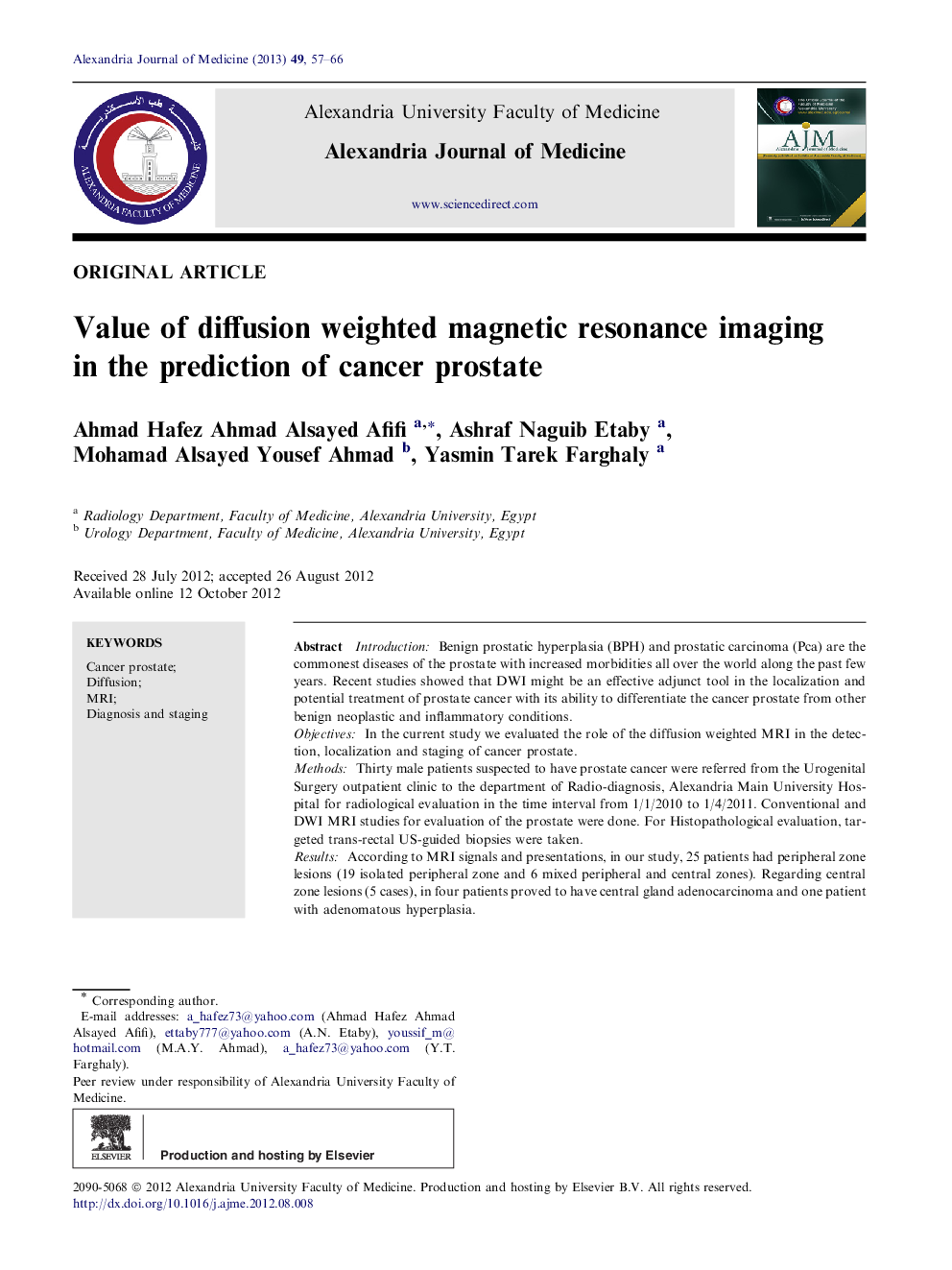| Article ID | Journal | Published Year | Pages | File Type |
|---|---|---|---|---|
| 3431792 | Alexandria Journal of Medicine | 2013 | 10 Pages |
IntroductionBenign prostatic hyperplasia (BPH) and prostatic carcinoma (Pca) are the commonest diseases of the prostate with increased morbidities all over the world along the past few years. Recent studies showed that DWI might be an effective adjunct tool in the localization and potential treatment of prostate cancer with its ability to differentiate the cancer prostate from other benign neoplastic and inflammatory conditions.ObjectivesIn the current study we evaluated the role of the diffusion weighted MRI in the detection, localization and staging of cancer prostate.MethodsThirty male patients suspected to have prostate cancer were referred from the Urogenital Surgery outpatient clinic to the department of Radio-diagnosis, Alexandria Main University Hospital for radiological evaluation in the time interval from 1/1/2010 to 1/4/2011. Conventional and DWI MRI studies for evaluation of the prostate were done. For Histopathological evaluation, targeted trans-rectal US-guided biopsies were taken.ResultsAccording to MRI signals and presentations, in our study, 25 patients had peripheral zone lesions (19 isolated peripheral zone and 6 mixed peripheral and central zones). Regarding central zone lesions (5 cases), in four patients proved to have central gland adenocarcinoma and one patient with adenomatous hyperplasia.Analysis of data in the receiver operator characteristic curve yielded sensitivity of 100%, 95.83% specificity, 95.83% PPV, 97% NPV and 97.87% accuracy for a cut-off value of 1.2 × 10−3 mm2/s for detection of Pca in the PZ. In the CG the sensitivity for detection of Pca foci was 98.2%, specificity 93.24%, PPV 91.67%, NPV 95% and accuracy 96.8% for a cut off value of 1.0 × 10−3 mm2/s.ConclusionDiffusion MRI is a helpful recent modality in diagnosis and staging of prostatic carcinoma.
